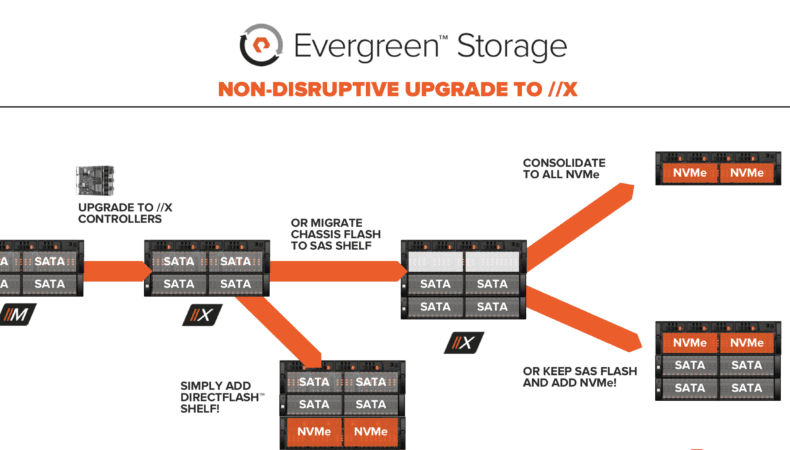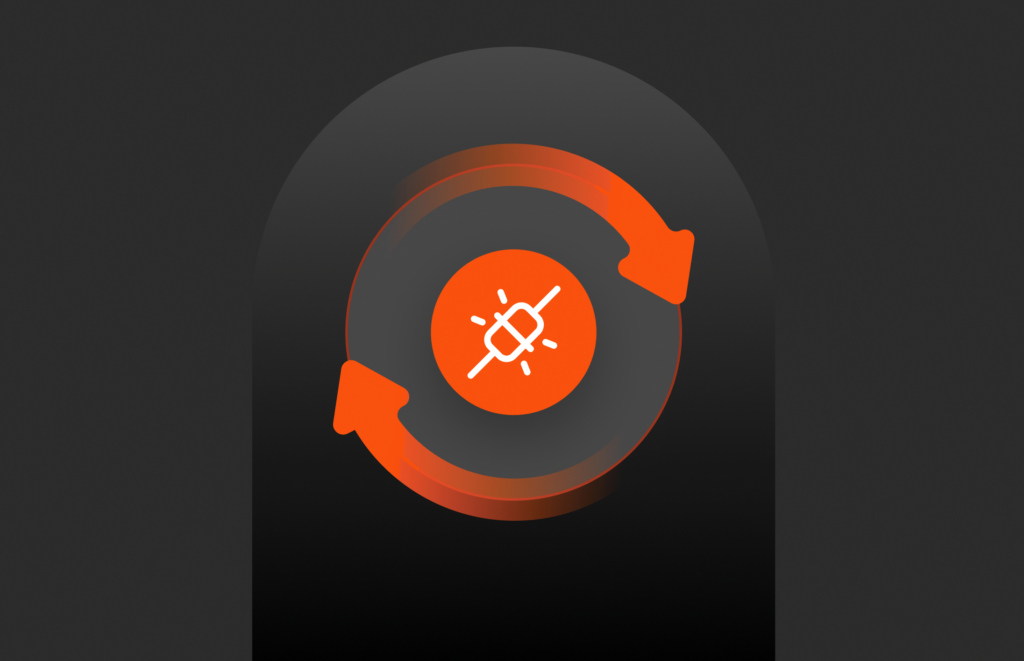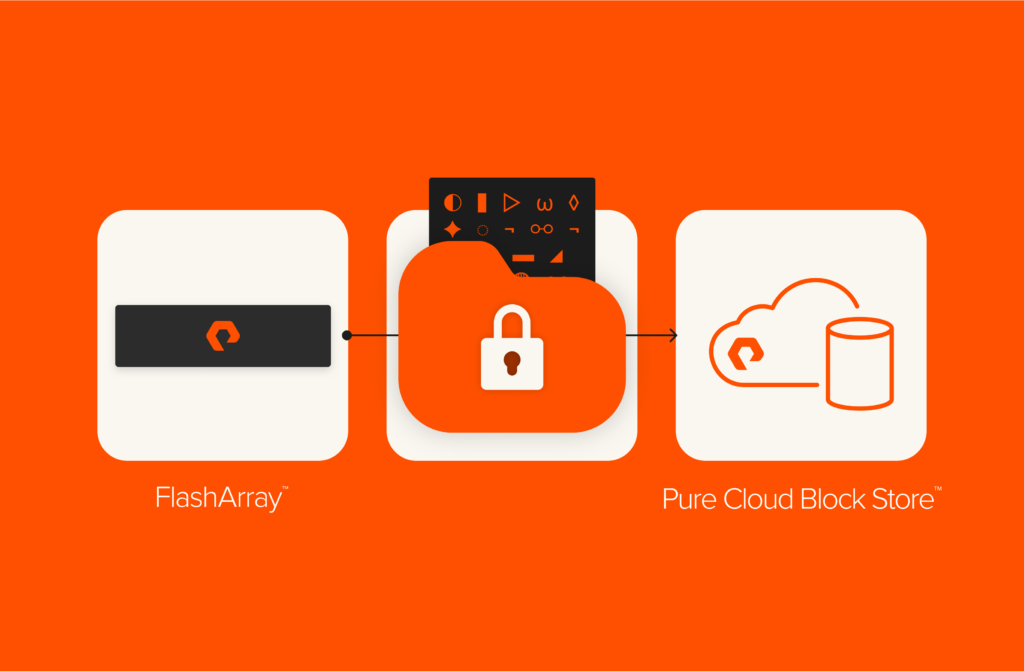If you’re new to Pure, you may not know about one of the core features of the FlashArray, which is to Non-Disruptively Upgrade (NDU) the FlashArray’s software as well as hardware. Ask any Pure customer, and you’ll likely hear about their stress-free upgrade experiences with our FlashArrays, all performed by our unrivaled Pure Storage Support team. (The support experience is a key contributor to our high NPS score).
You may think, “OK, every storage vendor talks about non-disruptive upgrades. Nothing new here.” Well, that may be true for software upgrades to some extent, however non-disruptive upgrades with hardware is a completely different ball game. Keep in mind, I’m not just talking about adding additional capacity or adding controllers to an existing storage array. I’m referring to the ability to perform an in-place upgrade of the existing controllers to any other controller regardless of family or generation while data is churning online and running at 100% performance.
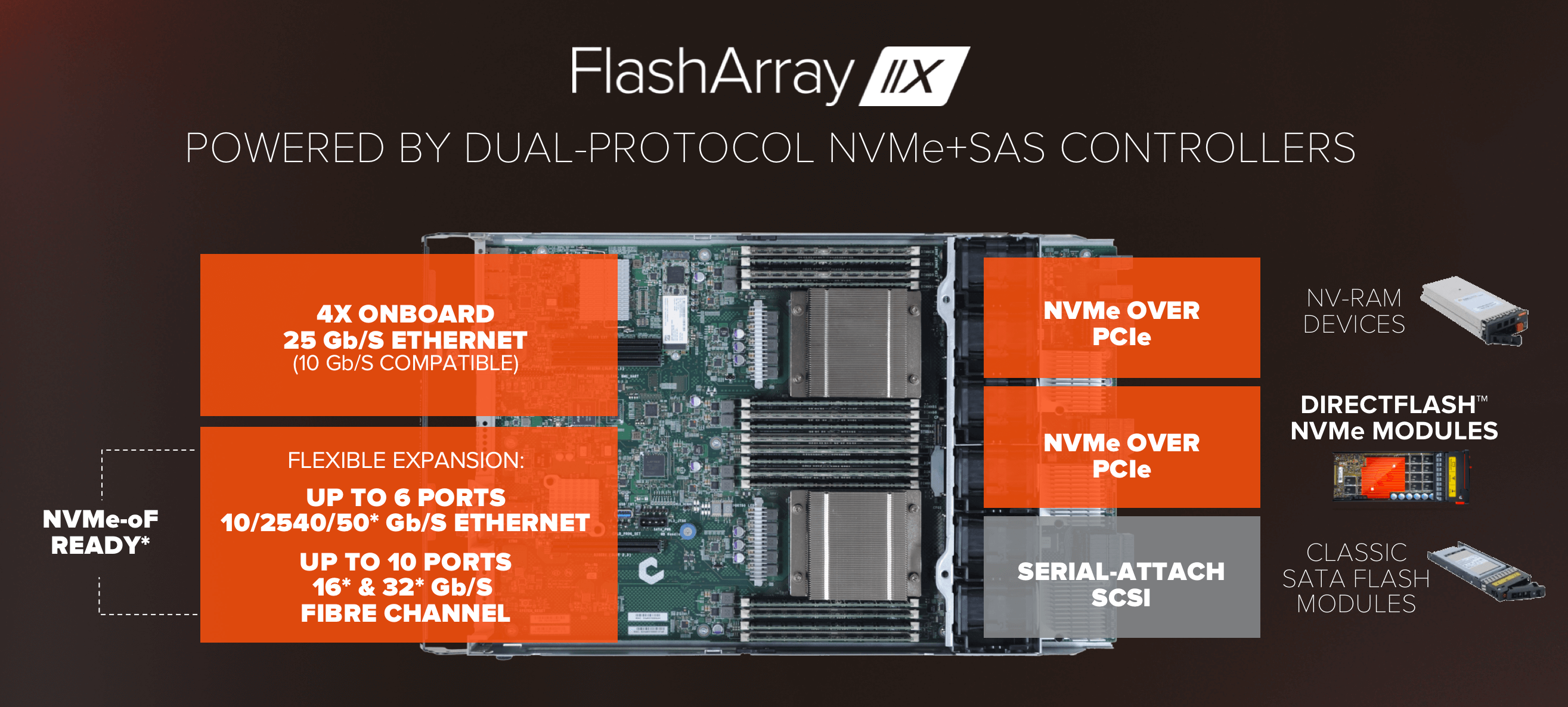
This is what Pure means when we refer to our products as being engineered to be Evergreen™: we have built non-disruptive upgradability into our arrays from the very beginning. Plus, we matched these NDU abilities with the Evergreen Storage program, which protects your storage investment and provides a subscription to innovation that just keeps getting better with age.
Other Vendors’ Hardware “NDUs”
When most other vendors talk about NDU, what they’re really referring to is adding a completely net new storage array and migrating data with some sort of migration tool. Viewed objectively, this is not an NDU but rather a data migration.
When you perform a data migration, you are not just moving static data. You’re moving data that may be constantly changing while also ensuring the solutions and applications tied closely to that data are not affected in any way. It requires a lot of planning and coordinating and may likely involve costly professional services to perform these migration services. More often than not, migration services can take weeks if not months. What is typically involved in this type of event?
- Prior to performing an NDU with other vendors’ gear you need the available space and power in the data center for the new hardware.
- You’ll need to have the additional physical Ethernet and Fibre Channel ports available to connect up the new array hardware.
- Then you’ll need to route and connect the Ethernet and/or Fibre Channel cables.
- Next, you go through the arduous process of configuring the network connectivity and/or Fibre Channel zoning.
- Once the physical portion is complete, you are still going to need to install and configure the migration tool. Also, depending on the migration tool, the host OS, or the MPIO drivers, a host reboot may be required.
- Make sure everything is compatible between all the different hardware and software layers.
This is why most data migration projects take months even between hardware from the same storage vendor. Once the migration is complete, you still need to do the cleanup of the old array which means you unzone, uncable, and unrack.
Pure’s Hardware Non-disruptive Upgrades
The concept of an NDU is an integral part of what we do at Pure, and has been part of the FlashArray’s DNA for many generations. The FlashArray controller has been designed to be completely stateless and therefore data integrity is not dependent on the physical controllers. Host IO Write data is actually not stored on the FlashArray controllers but rather on the NV-RAM devices which are physically decoupled from the controllers. Pairing the FlashArray’s architecture with the Purity Operating Environment software, which handles dynamic controller failovers, allows the controllers to be completely transparent.
This results in the hosts to continue IO without being affected during an NDU. Furthermore, there is no re-zoning or any other type of user intervention required during or after a controller has been upgraded. The Purity Operating Environment software handles this by transferring the IP’s and WWN’s from the original controller to the new controller. The Fibre Channel switches see the same WWN’s despite the controller FC ports being physically replaced. From the host perspective, the only noticeable experience is an MPIO path failover.
When a next generation FlashArray goes through its initial hardware design phase, our Engineers are very purposeful about not only the performance, efficiency, and availability aspects of the FlashArray, but they also have the forethought to ensure hardware compatibility to allow NDU’s even in the face of major technological shifts like NVMe.
Take for example, when the FlashArray//M was designed, we utilized NVMe within the array for our NV-RAM devices and had also plumbed the chassis with both SAS and NVMe capable components in preparation for the next generation FlashArray//X. Customers can continue the tradition of being able to NDU without the hassle of migrating data. Customers can NDU from an FA-400 (which was one of the very early generations of FlashArray generation) to the latest //XR2, skipping multiple generations!
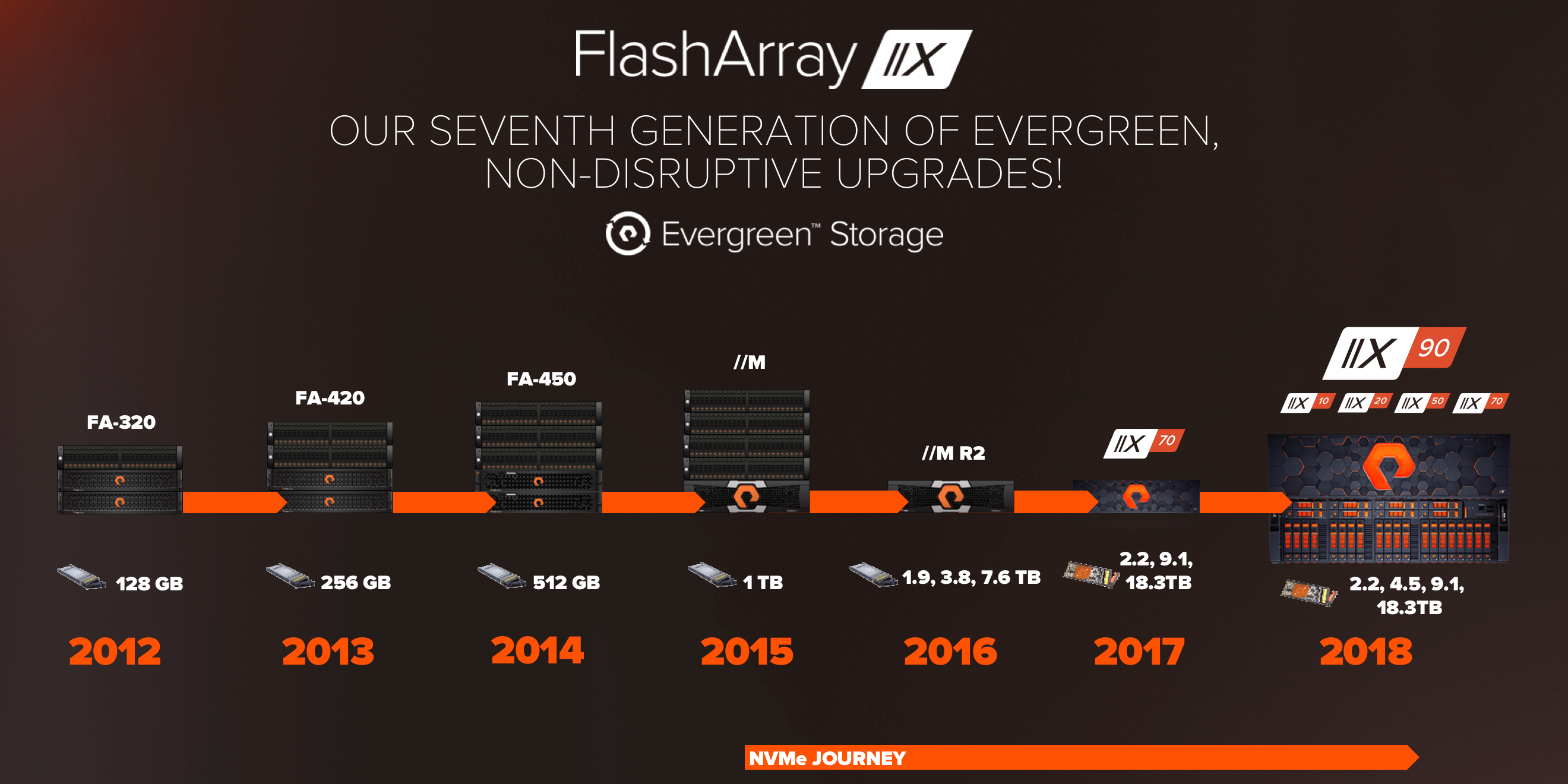
For customers who are currently on an //M or //X70R1, it’s now even easier to NDU into the //XR2. It’s a simple controller in-place replacement since the //M, //XR1, and //XR2 all sit on the same NVMe capable chassis. There is no additional physical rack space or power required. To illustrate the steps involved, here’s an example of an //M to //XR2 NDU:
The example below consists of a FlashArray//M with two SAS drive shelves.

- Shut down //M Controller 0, remove host and drive shelf cables, and take out //M Controller 0. //M Controller 1 is now the primary controller handling all host IO.
- Add new //XR2 Controller 0 and reconnect host and drive shelf cables to new //XR2 Controller 0.
- Shut down //M Controller 1, remove host and drive shelf cables, and take out //M Controller 1. //XR2 Controller 0 is now the primary controller handling all host IO.
- Add new //XR2 Controller 1 and reconnect host and drive shelf cables to new //XR2 Controller 1.

NVMe Expansion and Media Transformation
The above steps walk you through the NDU process of the FlashArray controllers from an //M to an //XR2, which is fully NVMe capable. As mentioned earlier, starting with FlashArray//M, the chassis were wired for both SAS and NVMe. This affords //XR2 customers the flexibility to continue using SATA Flash modules or to add NVMe DirectFlash™ modules in the chassis as needed. For expansion purposes, the //XR2 controllers can be populated with both SAS HBA’s for SAS shelf connectivity or 50Gb Ethernet HBA’s for DirectFlash shelf connectivity.

Customers who want to proceed with their journey towards an all-NVMe array may do so by going through a media transformation. A media transformation allows customers to convert their existing SATA Flash modules to NVMe DirectFlash modules. It leverages existing processes we already employ today for capacity consolidation. A media transformation is simply composed of relocating data from the existing SATA Flash modules to NVMe DirectFlash modules. The steps below help illustrate the process.
The example below consists of a FlashArray that has already gone through a controller NDU but still has SATA Flash modules in the chassis as well as an attached SAS drive shelf. We will highlight the media transformation steps that would follow the NDU.

- The first step is to add a DirectFlash shelf to the configuration. We simply connect a new DirectFlash shelf to the FlashArray via 50Gb Ethernet HBAs designated for DirectFlash shelf connectivity.
- Then we evacuate the data from the SATA Flash modules in the chassis.
- Once data is fully evacuated from the chassis, we physically replace the SATA Flash modules with NVMe DirectFlash modules.
- We then repeat the same evacuation step for the SAS shelf.

5. When evacuation completes, we simply disconnect and remove the SAS shelf. The media transformation is complete.
Compare the difference
You may see other vendors try to mimic this type of in-place NDU. But not all NDU’s are created equal. Most vendors only allow upgrades within the same generation, and rarely allow mixing flash geometries. And almost always, performance is impacted, meaning upgrades must be managed carefully and run at times least likely to impact operations. The ability to NDU to the next generation or even skip generations is usually not possible with other vendors. And even if it is possible, the complexity and performance implications involved cause organizations to delay modernizing their storage, costing them the agility they need to respond quickly to changing business priorities. This is what Pure means when we say that our products are engineered to be Evergreen.
Pure’s Evergreen™ Storage program combines this NDU technology with business programs that allow organizations to protect their storage investments. An Evergreen Gold subscription provides Free Every Three controller upgrades, so that at minimum, controllers can be kept modern via NDU every three years. It also includes Upgrade Flex, which allows customers to trade in old controllers toward new ones (still via NDU) on their own schedule. And even flash investment is protected with Capacity Consolidation, which provides trade-in credit of up to 25% toward the cost of newer, denser, more modern flash media. All Evergreen subscriptions include all of our Purity array software, including upgrades and new array features that we release in the future. And again, all of these upgrades, even across generations, are done via Pure’s NDU technology. Pure’s approach ensures that your storage just keeps getting better over time, saving you money and providing unparalleled IT flexibility.
So are you excited about the new //XR2? Even more excited that your //XR2 excitement is not deflated by messy data migrations requirements that other vendors have? Great, me too. With Pure, the future truly is Evergreen.
For more information on announcements this year at Pure//Accelerate, check out our overall launch blog, Data Centric Architecture Powers Digital Business.
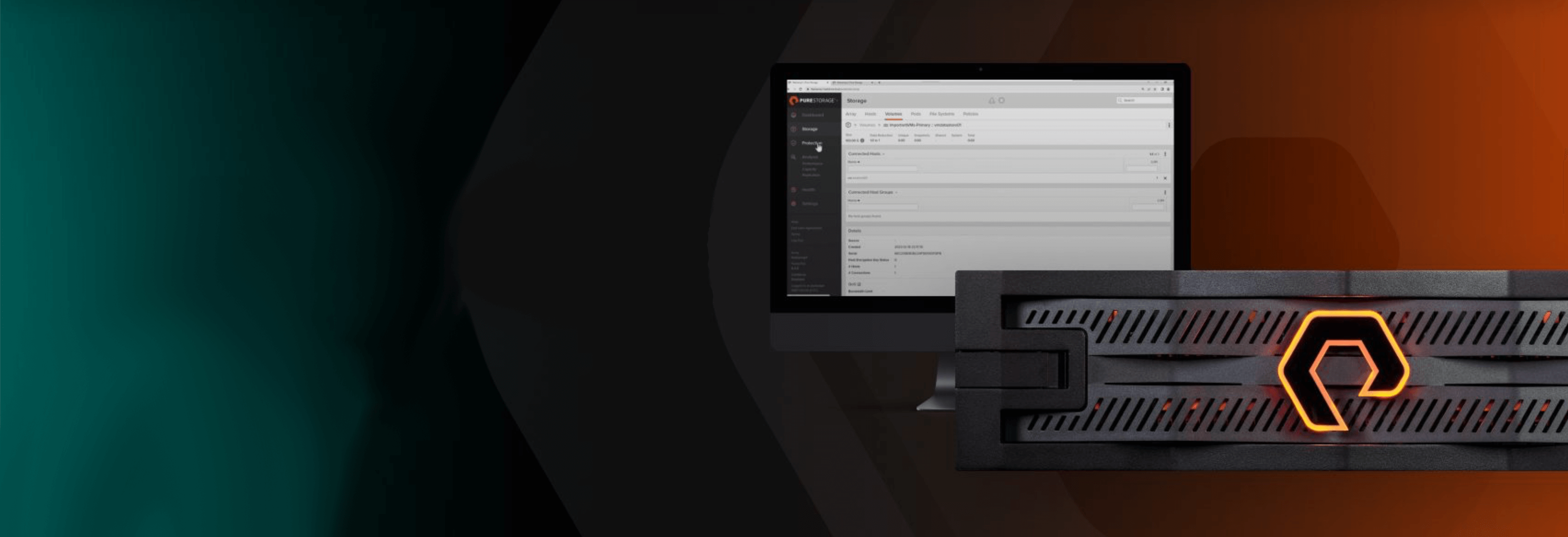
Free Test Drive
Try FlashArray
Explore our unified block and file storage platform.
